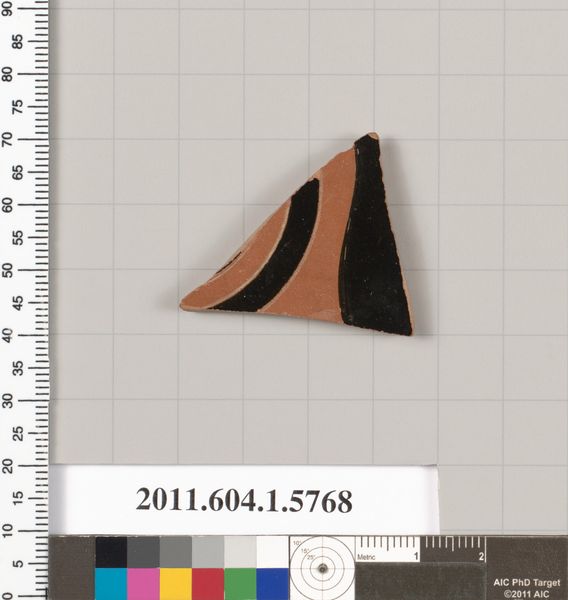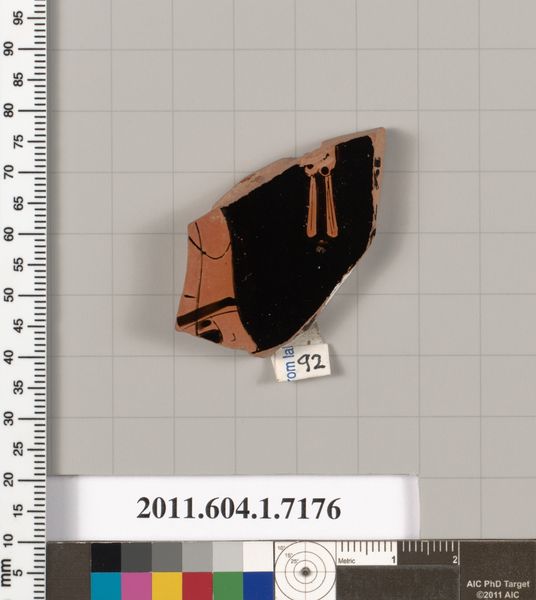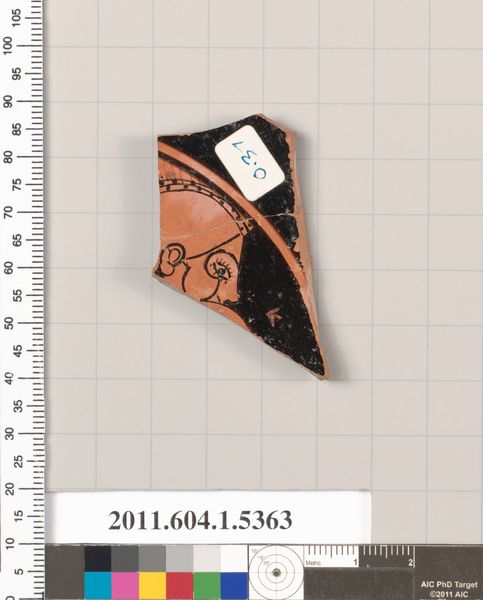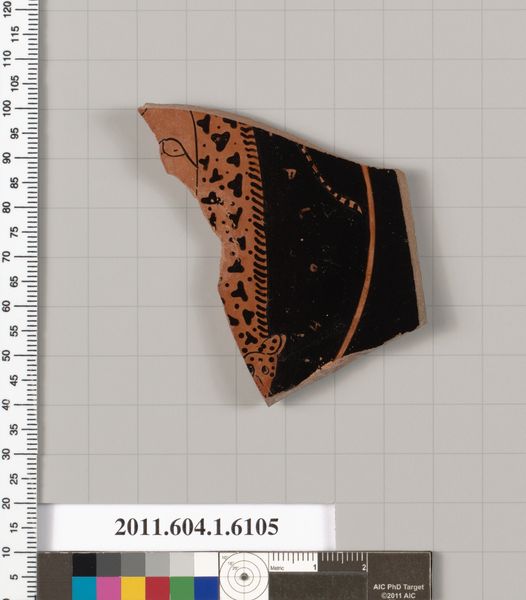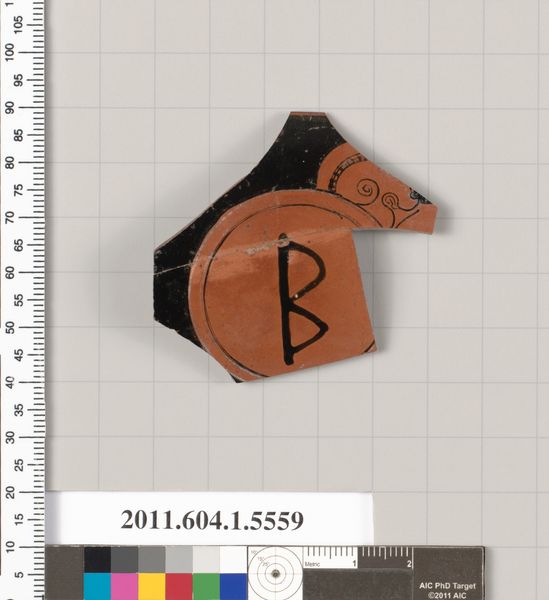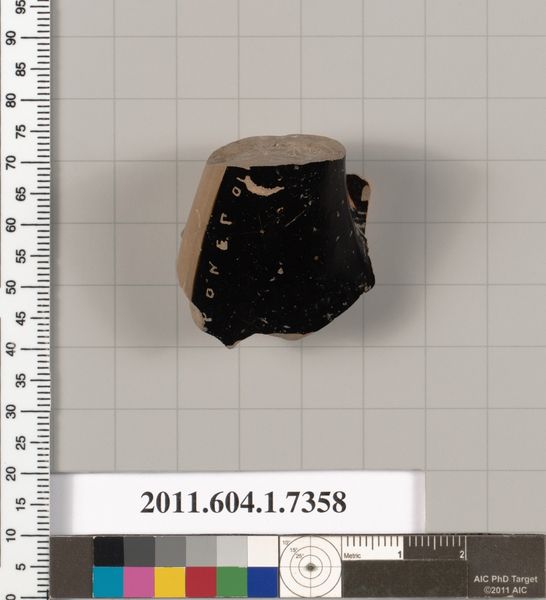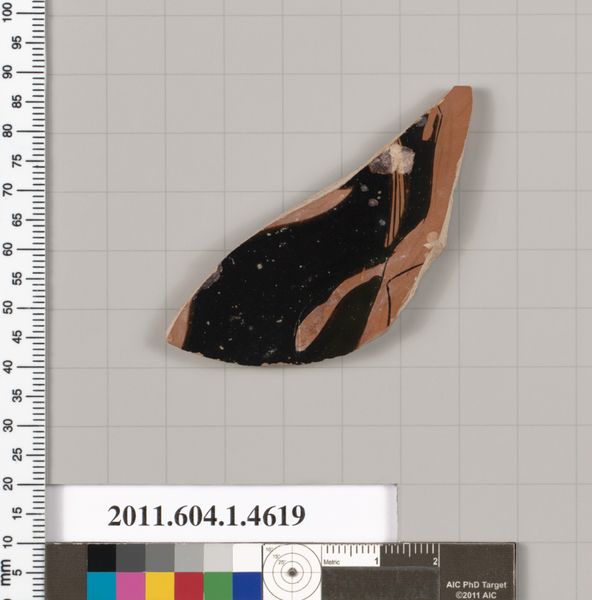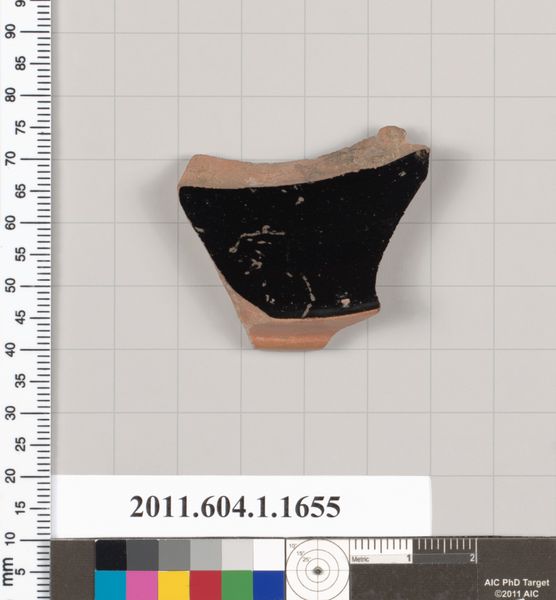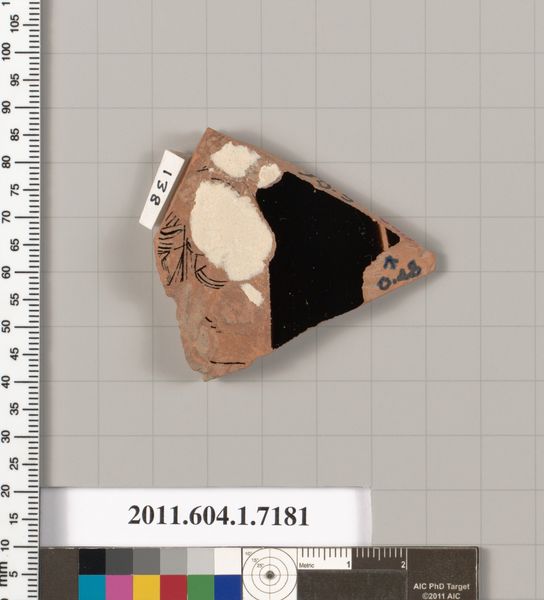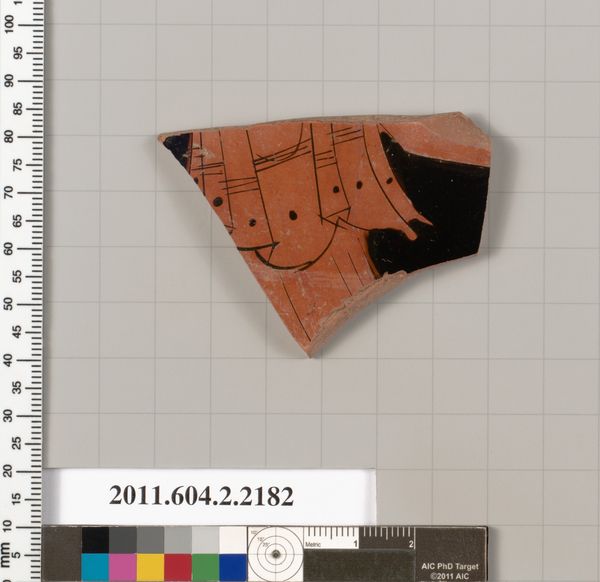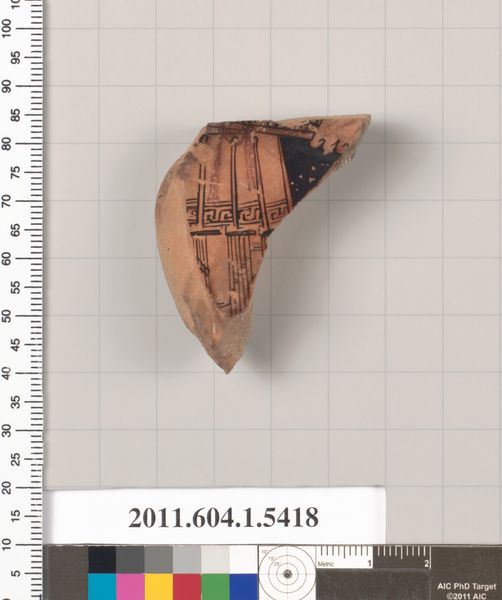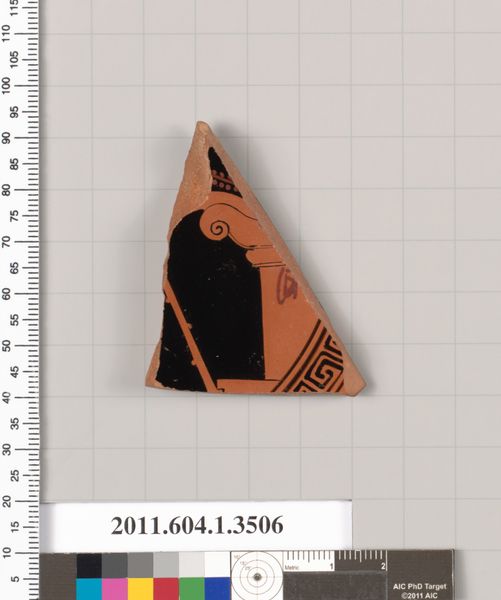
drawing, ceramic
#
drawing
#
greek-and-roman-art
#
ceramic
#
vase
#
figuration
#
ancient-mediterranean
Copyright: Public Domain
Curator: This fragment, a shard really, hails from a kylix, or drinking cup, crafted around 530 BC. What's left of this terracotta piece, made by someone in the workshop of Brygos, is now housed at the Metropolitan Museum of Art. Editor: Even in this fragmented state, there's a haunting elegance. The contrast between the glossy black and the warm terracotta is striking, and the curve suggests it was part of something more substantial. Curator: The Brygos Painter and his workshop are renowned for their detailed figural work on such cups. What’s missing here are those lively scenes, perhaps of athletic competitions, symposia, or mythological narratives, all cornerstones of classical Greek society. Editor: Still, even without those images, it's suggestive. The inscription - what's legible anyway -hints at language, at names, stories passed down. It sparks an interest in rituals. What were people drinking from these cups? What ideas were they passing around with the wine? It is powerful, just with the remnant of text. Curator: Yes, these cups were central to social rituals, especially amongst aristocratic men. Think of the symposium, a drinking party which also featured poetry, philosophical discussions, and political debate. The kylix became a vehicle for cementing social bonds. To be sure, art always serves the purposes of a social function. Editor: Absolutely, the imagery itself acted as a prompt for conversations, loaded with symbolic meanings, and these shapes trigger powerful sentiments. Even this bit, now, feels more alive than its storage unit implies; it reminds us of life. Curator: Precisely. Although shattered, this small fragment allows us to touch upon broader aspects of Ancient Greek culture, society, and art production. It highlights how artifacts gain historical importance based on use and societal interaction. Editor: In a way, the broken nature also evokes the past, like the ruin is calling to us, to imagine, or better, remember the rest. A compelling object even in its current, incomplete condition.
Comments
No comments
Be the first to comment and join the conversation on the ultimate creative platform.
